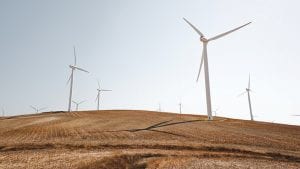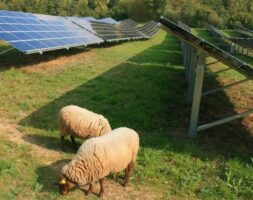It won’t please everyone, and the detail – as yet – is fairly thin, but there is plenty already being said about the Future Made in Australia Act unveiled by prime minister Anthony Albanese in Queensland on Thursday.
In a speech to Queensland’s Media Club, Albanese laid out the foundations of federal Labor’s plan to use taxpayer-funded incentives to advance the manufacturing and clean energy industries, including hydrogen, green metals, solar power and emerging renewables.
See: Future Made in Australia: Albanese’s plan for green manufacturing
The speech, delivered in Queensland – which faces a state election in October – made a special pitch to the Sunshine State as a potential hub for this new industrial revolution. The responses, however, have come from all directions.
“Albanese’s speech announcing the Act is ambitious and visionary,” said Tim Buckley, director of Climate Energy Finance and a former MD of Citigroup.
“It has the makings of the foundation for our future as a zero-emissions trade and investment leader and global clean energy superpower, as we inevitably pivot from our historic dependence on carbon exports.
Buckley says Albanese’s vision is to build on Australia’s existing strengths – and critically, also look beyond them – a point many “old-school economists” have so far failed to grasp.
“Relying on traditional competitive advantage logic misses that the transition to net zero is a $US4-6 trillion annual investment opportunity globally for the next couple of decades… and one in which every major economy has invested massive national interest public capital,” Buckley said on Thursday.
“We strongly support the federal government’s view that state intervention is the new competition. We can’t afford to ‘sit it out’. The ‘Future Made In Australia Act’ puts Australia into the global race. Public capital is the investment signal and de-risking that private capital needs to flood into domestic zero-emissions economic opportunities.”
“This is the biggest policy shift we’ve seen in our lifetime,” said the national secretary of the Australian Manufacturing Workers’ Union (AMWU), Steve Murphy.
“A modern industrial policy can put people and communities affected by changing export demand for fossil fuels at the head of the pack for new jobs, projects and opportunities.”
“This is exactly the sort of leadership Australia needs to tackle climate pollution, generate clean jobs, and ensure a brighter future for our kids,” said Climate Council CEO Amanda McKenzie.
“The Act could be a game-changer that facilitates immediate investment to match the global clean energy shift, supercharge new industries, and cement Australia’s advantage in clean energy.
“Diversifying into sectors like clean manufacturing and critical minerals is essential. Developing these sectors will not only boost our economy but also help us slash climate pollution,” McKenzie said.
The Smart Energy Council said it was looking to the May federal budget to see how the government would lay the economic foundations for Act.
”For too long Australia has been a dig and ship country,” said SEC CEO John Grimes. “In the future we can value add to those minerals and export zero carbon iron, and other products to the world.
“This is hugely exciting. This is exactly the sort of vision that the Smart Energy Council has been looking for and we’re really looking forward to seeing the details in the lead up to, and in the budget.”
At the Clean Energy Council, CEO Kane Thornton said the PM’s speech marked a decisive moment for Australia to secure a place as a leading nation in the global clean energy industry.
“The highlighted areas of hydrogen, green metals and advanced clean energy manufacturing and assembly are genuine opportunities for Australia to expand, grow and diversify our economy centred around clean energy and create further demand for a large and skilled clean energy workforce,” Thornton said.
“While the size of Australia’s economy means we cannot match the full scale and reach of the IRA, smart and focussed policy and funding support can leverage our comparative advantages and expand our markets and economy.”
Darrell Best, a former coal worker based in the Illawarra in New South Wales described Labor’s plan for the Act as “excellent to hear.”
“The Illawarra’s industry was traditionally built on coal and steel, but we know to cut climate pollution and keep our regions thriving, we’ve got to tap into the Illawarra’s clean industry potential.
“We’re hopeful that as we learn more details about the announcement, part of the government’s focus will be on upskilling and training for industry workers in our region into renewable energy industries,” Best said.
Beyond Zero Emissions CEO Heidi Lee said the independent think tank had been calling for government investment in Australian manufacturing capability, having highlighted the many benefits through its research.
“It’s fantastic to see Australia step off the sidelines of the global clean energy race, and set up our communities to capitalise on our critical minerals by manufacturing solar panels, wind turbines with recyclable blades, batteries, heat pumps and parts for electric vehicles.
“Communities in regional Australia stand to benefit from the investment in affordable and reliable clean energy, and modern infrastructure that will link our resource-rich areas to clean industry clusters built around our established ports and smelters.
“This will see jobs and prosperity flow to places that need it most,” Lee said.
“This is an important announcement at a pivotal time for Australia as the world races to decarbonise,” said Amanda Cahill, CEO of The Next Economy.
“We hear from industry everywhere we go that government support like this is crucial to unlock private investment.
“This level of government ambition offers huge potential for regions, like Gladstone in Central Queensland where local government is already attracting new investment and government support under their 10-year Economic Transition Roadmap.
“But only if it’s approached holistically and that means ensuring better support for essential services and housing so that communities genuinely benefit over the long term.”
Australian Chamber of Commerce and Industry chief executive Andrew McKellar said promoting a sovereign manufacturing and industry capability was important.
He said the prime minister had reflected the “fundamental importance” of boosting productivity and improving competition for future prosperity.
“If the government is to invest in driving emerging Australian industry capabilities, that investment needs appropriate consideration and scrutiny,” McKellar said.
“This is a massive opportunity for a new, modern, clean industry with export potential, investment in homegrown innovation and opportunities for regional jobs and economic growth,” said Solar Citizens national director CEO Heidi Lee Douglas.
“In the upcoming Federal Budget, we want to see greater investment by government in supporting people currently locked out of rooftop solar and batteries to access the bill-saving benefits of renewables and locally made panels.”
Less effusive about Labor’s plan, however, is Australian Greens leader Adam Bandt.
“Labor needs to pick a lane,” said Bandt on Thursday.
“Skilled workforce shortages mean that we can’t choose both coal and gas and clean green jobs, and if Labor tries to do both, Labor will miss the green jobs boom and make the climate crisis worse.
“Coal and gas pumps out climate pollution and sucks up skilled tradespeople and capital funding. Every new coal and gas mine approved by Labor not only makes the climate crisis worse, it sets back the green jobs boom by diverting money and workers.
“Economists are warning that we must stop opening up new coal and gas, not just to stop the destruction of communities by bushfires and flooding, but so that all Australians can benefit from the green jobs boom. Labor must stop opening new coal and gas.”
Sam Ringwaldt, CEO of Conry Tech – an Australian start-up specialising in super energy efficient air-conditioning systems – says it will take more than speeches to rescue Australian manufacturing from its current state of terminal decline.
“It’s great that Albanese is talking about Australian manufacturing, but we need to start putting these words into action,” Ringwaldt said on Thursday.
“The National Reconstruction Fund is a prime example. It has some amazing people involved, and lots of real world experience at the helm, but the timeline reads like a Utopia TV show script.
“The program gets announced to great fanfare, the $15bn funding gets confirmed, the board gets chosen, the first meeting is held. A year on, before it has achieved anything of note, it gets consolidated into a bigger manufacturing program with an even more ambitious objective.
“As a point of comparison, the US has spent billions in the US Inflation Reduction Act that inspired the NRF. Australia is yet to spend a cent.
“We want Australian manufacturing to thrive, but every year we delay substantial action and investment, we see more factories close, more companies leave, and more imported goods. Soon there will be nothing left to save.
With additional reporting from Samantha Meacham and Andrew Brown from AAP








